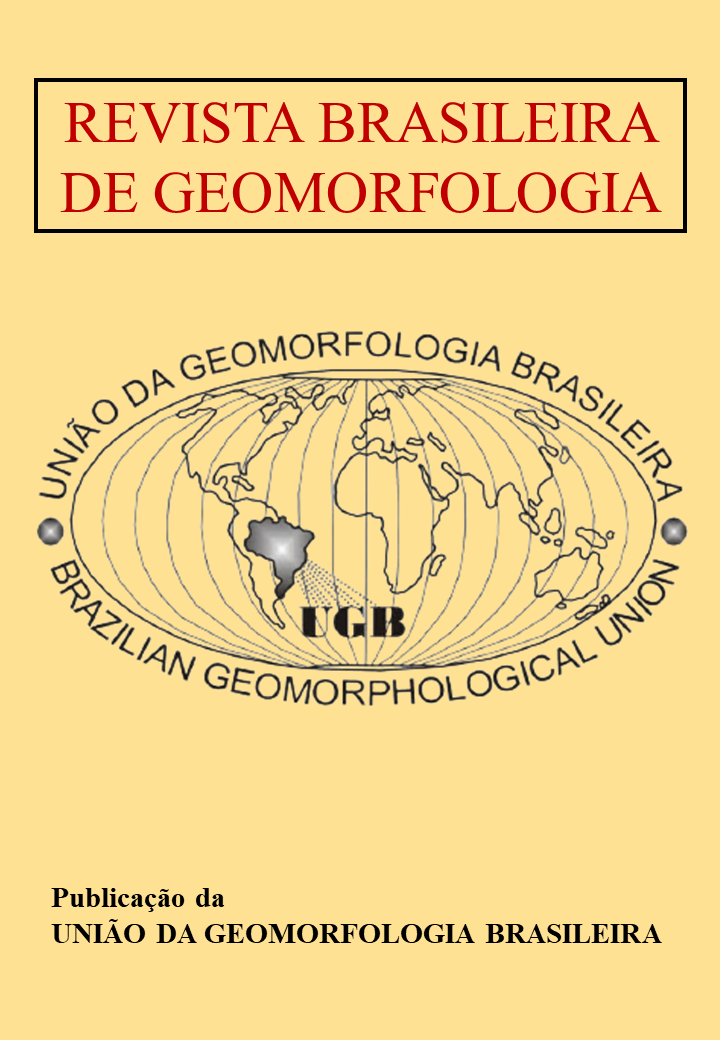Analysis of the spatial distribution of gullies in the Pandeiros-MG river basin: a Geomorphological approach
DOI:
https://doi.org/10.20502/rbgeomorfologia.v24i00.2366Keywords:
Gully clusters, Slopes, Regolith, Physical and chemical properties, Principal Component AnalysisAbstract
The impacts of the gullying process contribute to increasing environmental vulnerability due to the loss of sediments and the intense silting they cause, as is the case of the Pandeiros river basin in Minas Gerais State, Southeast Brazil. This work investigates factors associated with the spatial distribution of 215 mapped gullies, which occur in 5 well-defined groups in the landscape, based on the analysis of geomorphological/geological data obtained through geological, slope, hypsometric and knickpoints maps, and the average values of characteristics physical (granulometry) and chemical (pH H2O, KCl), electrical conductivity, organic carbon, macronutrients: Ca2+, Mg2+ and oxides: Fe2O3, Al2O3 and TiO2 of regolith of 5 slopes with gullies, one in each group. The results indicate the existence of geological-geomorphological controls of the relief, with the groups limited by specific slope ruptures of the basin. Principal component analysis (PCA) made it possible to compare the parameters of the regolith of the five slopes/gullies studied, showing that PC1, related to silt, PC2 to coarse sand, account for 45% of the total variance of the analyzed physical and chemical parameters. The PCA Biplot graphs also indicate heterogeneity among the five gullies, meaning they are not part of the same population.
Downloads
Downloads
Published
How to Cite
Issue
Section
License

This work is licensed under a Creative Commons Attribution-NonCommercial 4.0 International License.
Author (s) retain copyright and grant the journal right of first publication with the work simultaneously licensed under the Creative Commons Attribution License that allows sharing the work with recognition of its initial publication in this journal.








